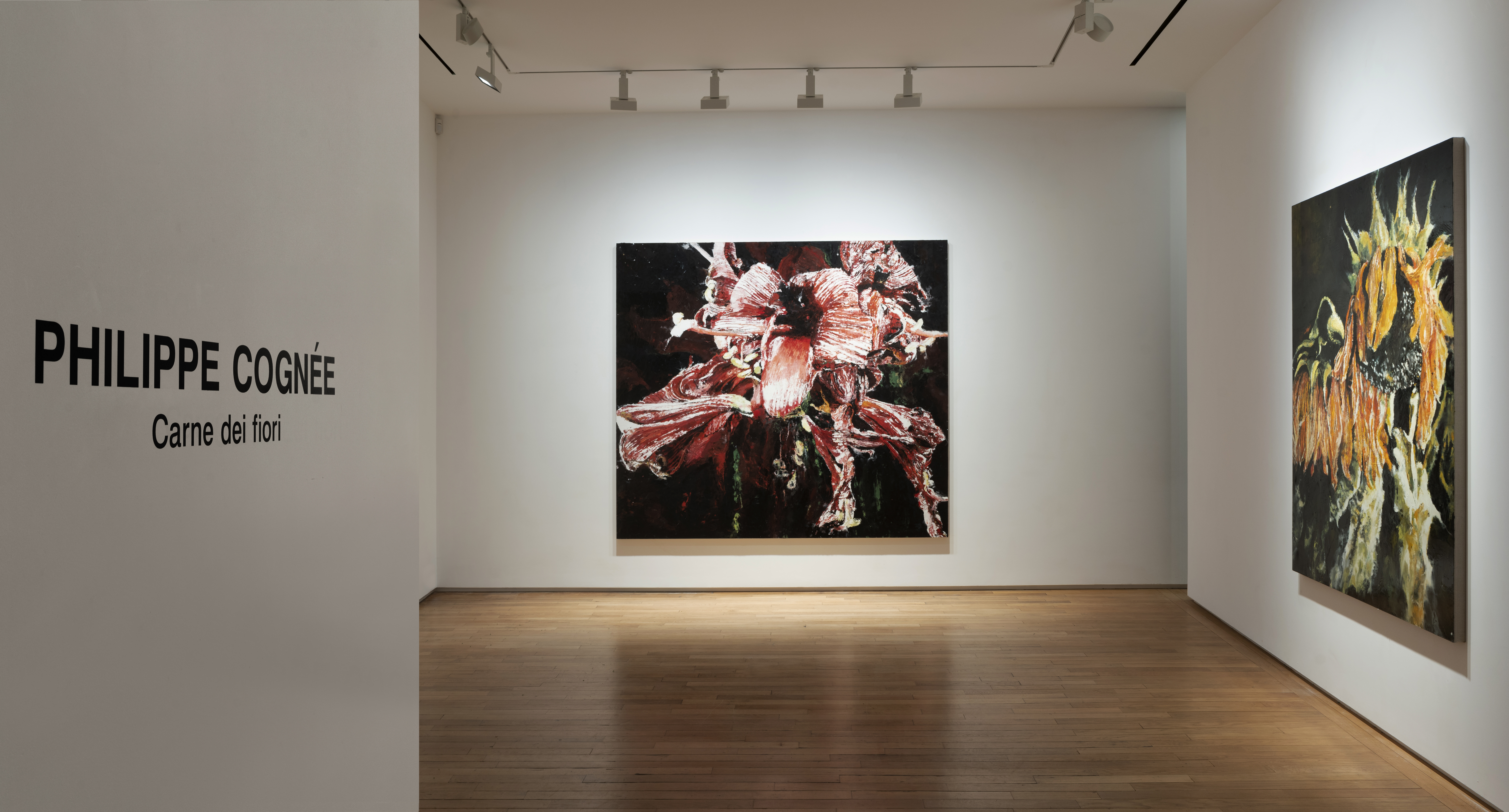
Philippe Cognée
Carne dei fiori
For his return to Galerie Templon, the painter Philippe Cognée, famous for his blurred wax-paintings, is branching off in a radically different direction. After exploring supermarkets, highways, skyscrapers and slaughterhouses, his focus is now on flowers, which he masterfully metamorphoses into monumental vanities.

For many years, Philippe Cognée seemed obsessed with everyday life. He made a name for himself with his monochrome paintings of fridges and washing machines that filled the entire plane of the canvas. Observing the world through the prism of photography, video or Google map, he developed large scale compositions featuring high-rises, supermarkets, roads, deserted suburbs and anonymous crowds, toeing the line of abstraction. His visual language of richly textured and sensual wax, melted, crushed, ripped off with plastic film, offered a stark contrast to an ostensibly dull and uniform reality. The challenge was of a tall order: demonstrating how art could still surprise us with an original interpretation of our environment and bring out the sublime within a uniform, modern and often disembodied reality.
By embracing the theme of flowers, Philippe Cognée seems to have chosen yet another banal subject. His sunflower hearts, peonies and amaryllis, dried or wilted, are, however, so vastly enlarged and so deformed by the wax that they are hardly recognizable. His encaustic techniques have become more complex than ever. Applied with a brush or slow-dripped, smoothed with an iron or artificially corrugated, wax presents itself as a material split between two states, echoing the ephemeral in-between state of these flowers, between life and death.
The artist

Philippe Cognée was born in 1957 in Nantes, France, where he lives and works. His paintings use wax that is heated and crushed, producing a blurred effect and raising questions such as the thinning away of the image and the human condition in the light of humans’ relationship to their urban environment. The artist draws inspiration from photos and videos of elements such as motorways, buildings and aerial shots. His work questions the role of art in a society where new digital technologies have ushered in the era of the image, both omnipresent and diminished.






